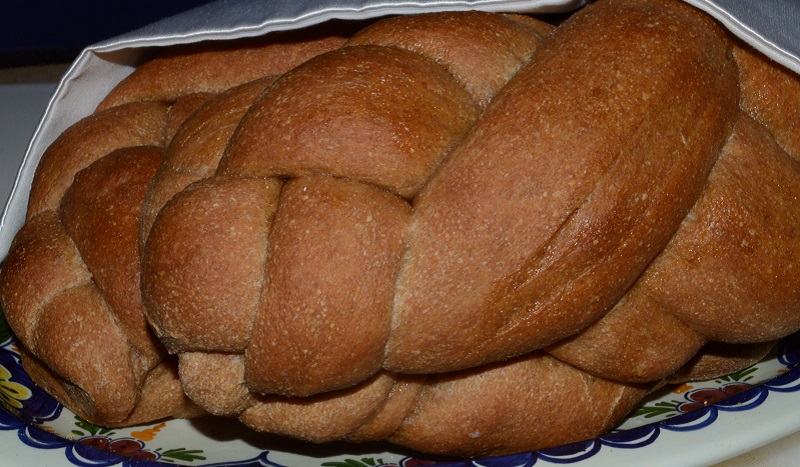
Last week, we shared a monthly Shabbat dinner in my shul. We call these evenings “Third Fridays” because that’s when we come together to enjoy one of the high points of the Sabbath, an extended communal dinner with learning and songs.
I like to prepare these meals. It’s a meaningful way for me to structure my week. I used to make elaborate meals every week and have guests in my West Rogers Park home. My week was oriented toward finishing the house cleaning, shopping and cooking by sundown on Friday, the beginning of Shabbat.
Then for 26 hours, I “rested,” that is, I visited with friends and family at dinners and midday meals during this weekly holiday, went to synagogue, read, walked and occasionally napped. At the end of the day, well after sunset, I lit the havdalah candle and recited the prayers that end the Sabbath. Then there was that sudden frenzy of activity with the Sabbath over when it was time to run out to a movie or some other Saturday evening activity.
Since cooking isn’t permitted on the Sabbath in a traditional community (cooking is defined as boiling liquid), all the cooking needs to happen before candle-lighting, or sunset, Friday evening. This means there’s something of a frenzy before the Sabbath begins as well.
One of the ways I like to think about that rush before Shabbat is that I am creating the experience for myself (and others) of being nurtured. With everything made before Shabbat begins, I am able to sit at the table with everyone else to enjoy the food and friendship and songs. I feel nurtured. I have bread without work in that moment.

It’s hard to describe this weekly experience to someone who has never enjoyed it, the special feelings associated with each hour of the day as the angle of the sun changes and the prayers and songs move successively through the themes of creation, revelation and redemption. There is a feeling of nostalgia and longing associated with those last rays of light slanting into a room at the close of the day toward havdalah and the end of this special time. Rabbi Abraham Joshua Heschel calls the Sabbath, “a palace in time.”
Sometimes I miss living in a neighborhood that supports this way of living, a community where everything is walking distance, including people with whom I can share the occasion. I’ve really been happy to be able to prepare a Friday evening meal for my synagogue and share it with friends there.
A few months back, I decided to make these Shabbat dinners vegan. My Sabbath experience is deeper and richer and more full of joy when my meals are plant-based, and I have enjoyed the opportunity to try out new dishes with my friends.

Here is the menu we enjoyed:
Vegan Spelt Challah & Wine for Kiddush
Salads: Muhammara, Tomatoes & Cucumbers, Navy Beans with Dill, Hummus, Red Cabbage Slaw, Babaganoush, Sweet Red Pepper Salad, Kalamata Olives
Soups: Choice of Red Lentil Soup or Ricey Spinach Soup
Entree: Black Bean and Zucchini Pasta with Ratatouille Topping (I also made sauces, Harif, Z’hug and a mild Salsa Verde)
Dessert: Vegan Chocolate Mousse, Strawberries, Toasted Almonds
Two of these salads were new to my Shabbat repertoire: Navy Beans with Dill and the Babaganoush. Well, the Babaganoush isn’t really new — it’s just that I used to use Labne, a thick Middle Eastern yogurt, to make mine. This version was vegan.


I shopped on Wednesday, made all the salads and the mousse on Thursday and made the soups and entrée on Friday. I make challah twice a week and freeze at least one loaf a week for these dinners, which at the present time require four challot. At 3 PM, we left for the synagogue so we could set the tables and plate the salads before Shabbat.
I always prepare a two-minute thought to share with our group, and this time, I asked everyone to think about the difference between habit and ritual. This is a question I worked with recently in preparation for a class I plan to teach next spring. So far I have five ideas about how they are different, but I shared just one: that ritual requires thought and intention while habits are, and are meant to be, thoughtless.
I was very happy to have Rabbi Maralee Gordon with us this week. That meant I could turn the evening over to her to lead Kiddush at the beginning of the evening and Birkat ha-Mazon and singing at the other end of the evening. Everybody helped with serving and cleanup, and I enjoyed a beautiful Shabbat evening with my friends!
For more, visit my blog, vegetatingwithleslie.org, “Like” me on FaceBook/Vegetating with Leslie or follow me on Twitter, @vegwithleslie.





